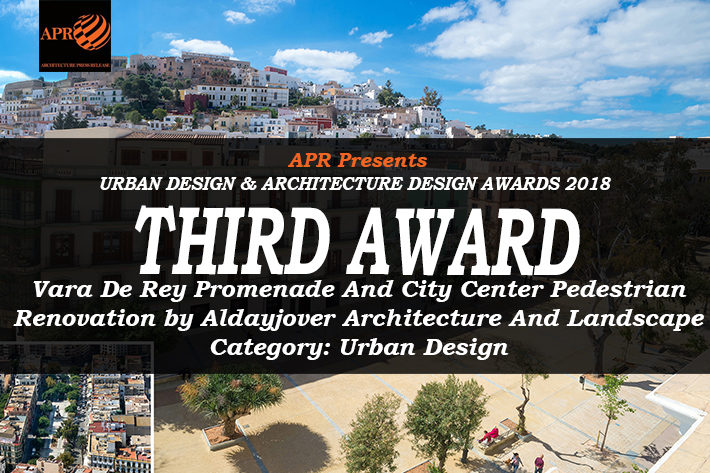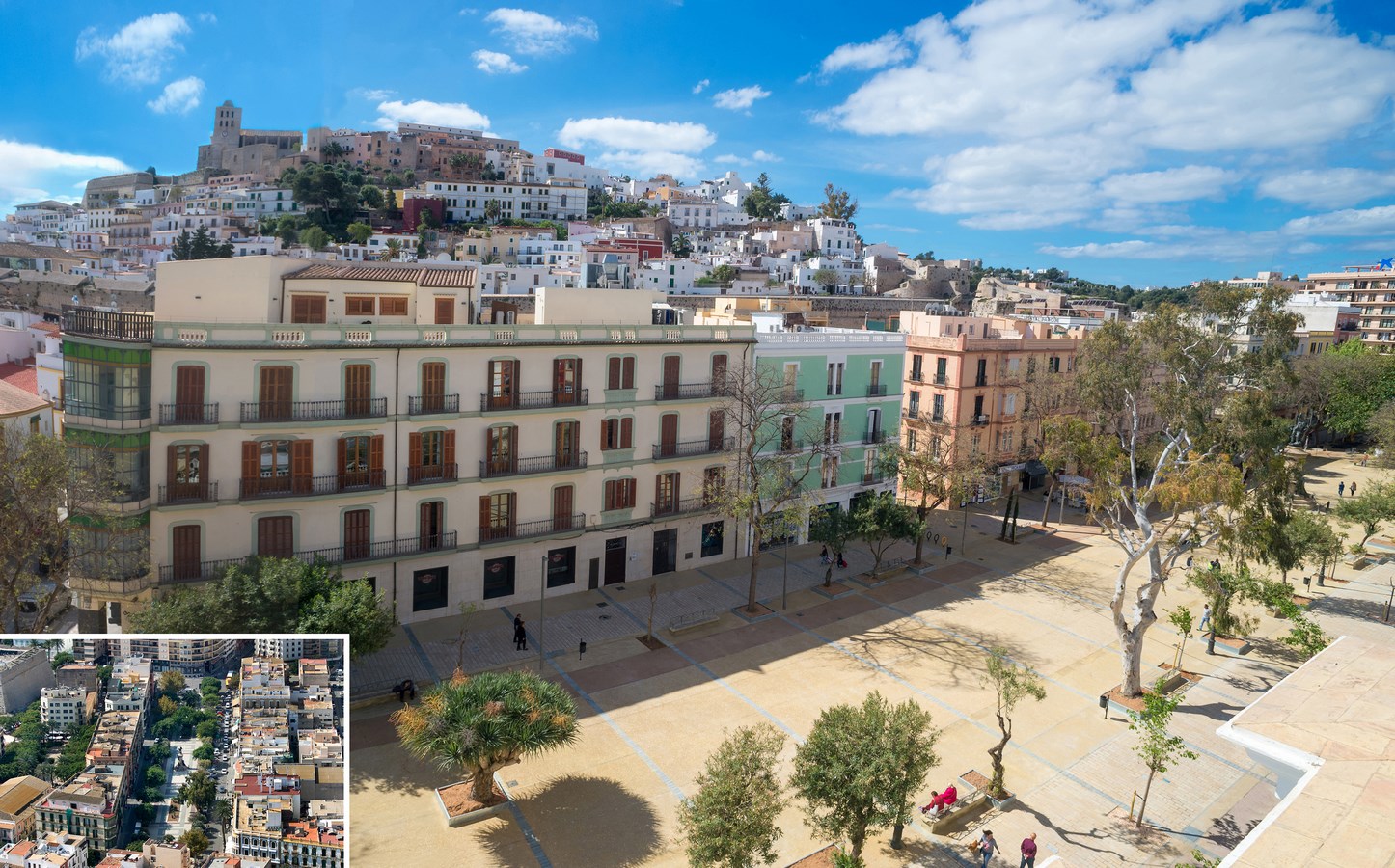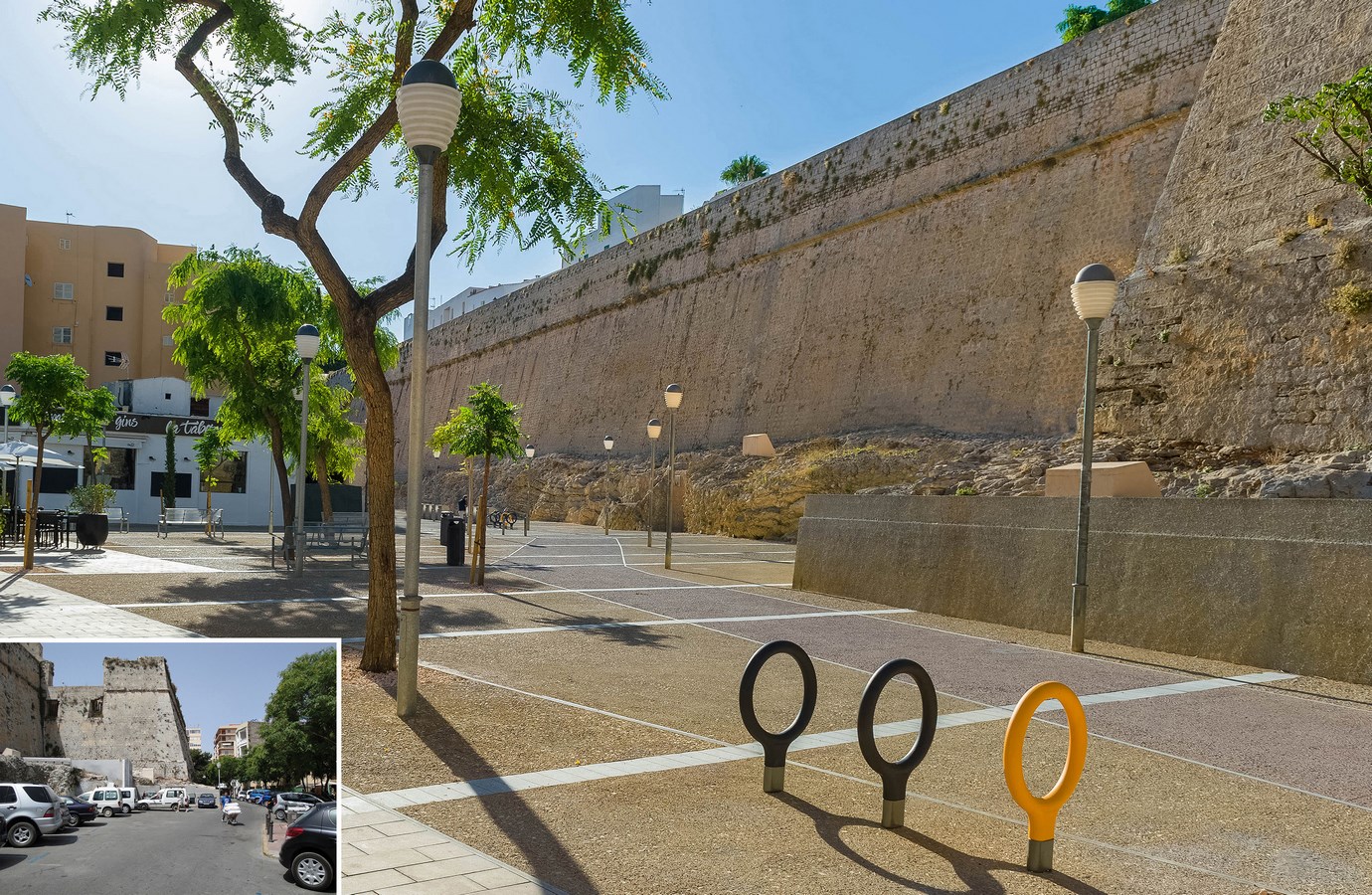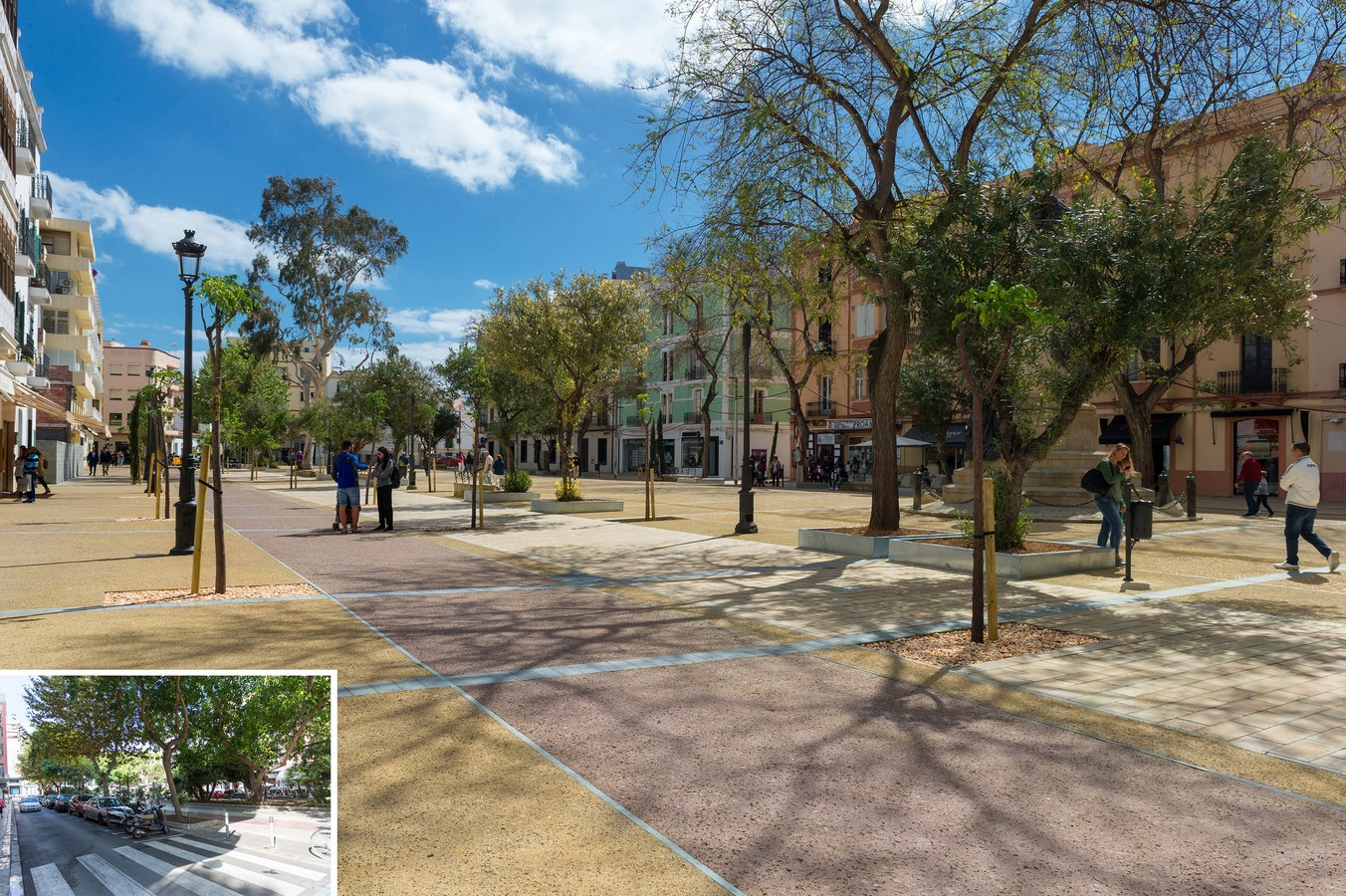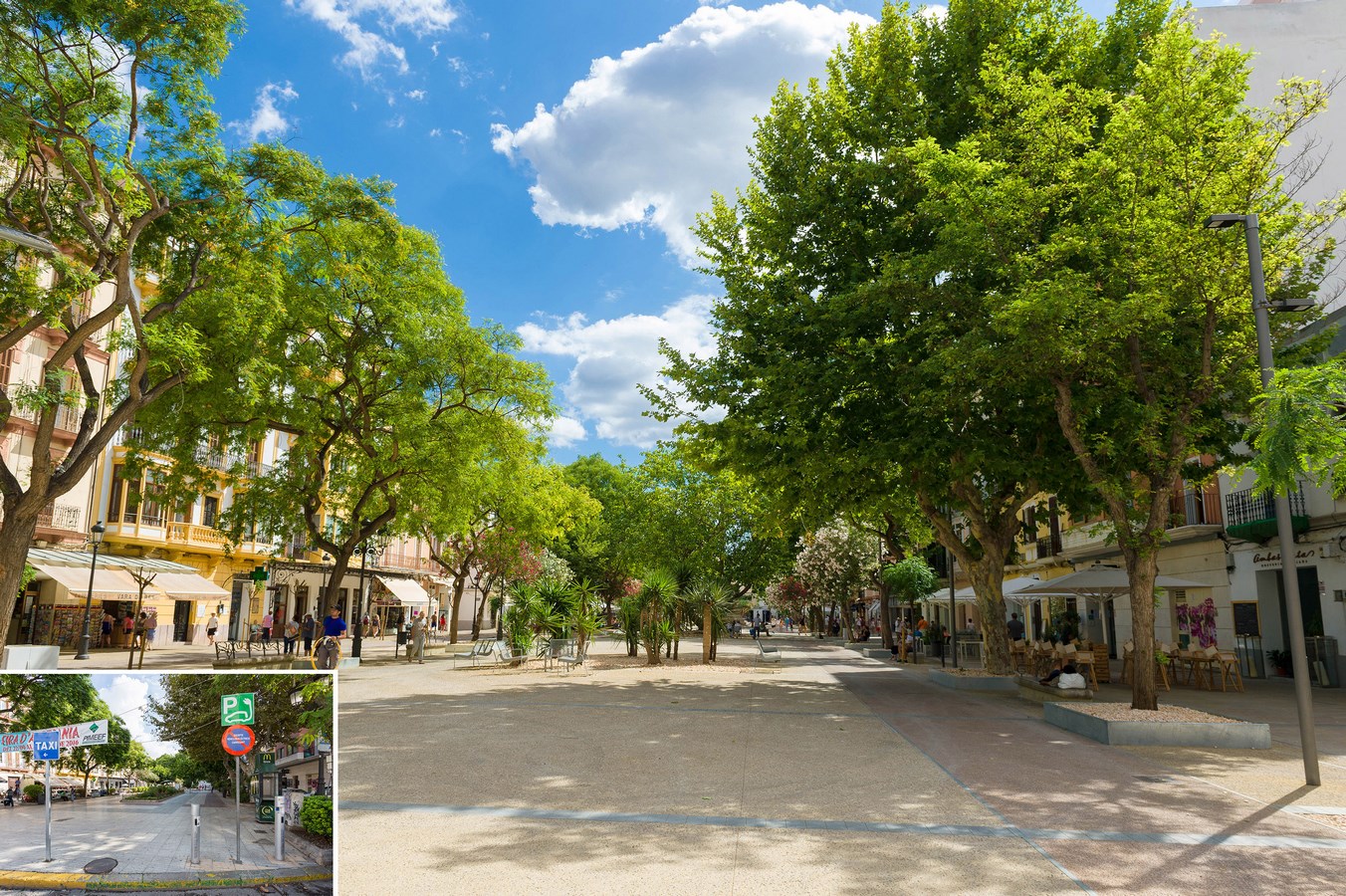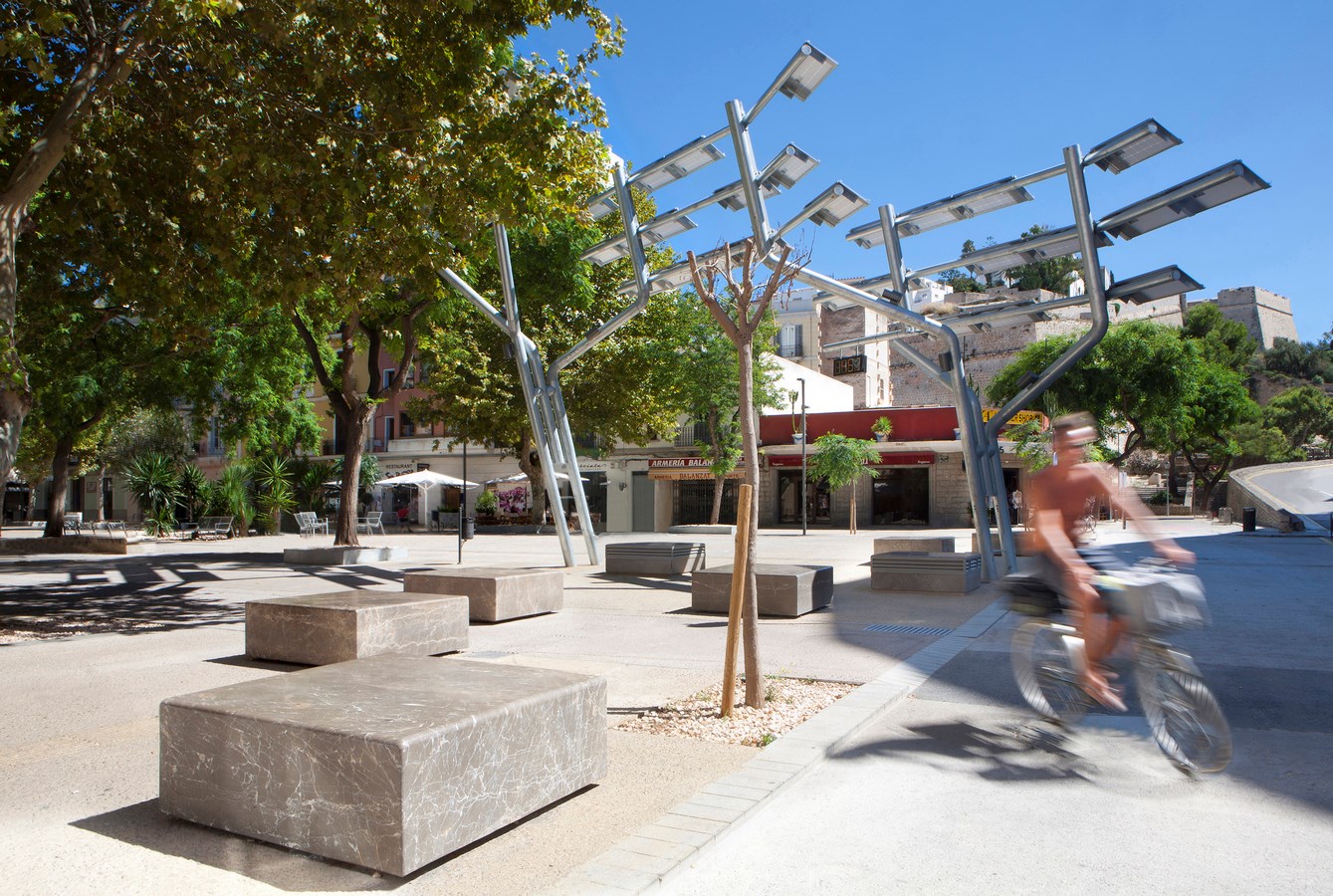In Ibiza, the Paseo Vara de Rey and the Plaza del Parque are the city’s most vital public spaces, located at the base of the renaissance fortification Wall, a World Heritage site. These popular sand and tree-lined XIXth century promenade and square were Ibiza’s living room until a 1960’s unfortunate operation that fragmented the public space into minimal sidewalks and reduced central spaces isolated by parking lots and transit lanes. The base of the Wall also became a parking lot and a back alley for trash bins and service stalls. In 2017, after years of deterioration, the recovery of these important public spaces has been finally undertaken.
Urban Design & Architecture Design Awards 2018
Third Award | Category: Urban Design
Architects: Iñaki Alday
Studio: Aldayjover Architecture And Landscape
Team Members: Iñaki Alday, Margarita Jover, Jesús Arcos, Francisco Mesonero
Country: Spain
Website: www.aldayjover.com
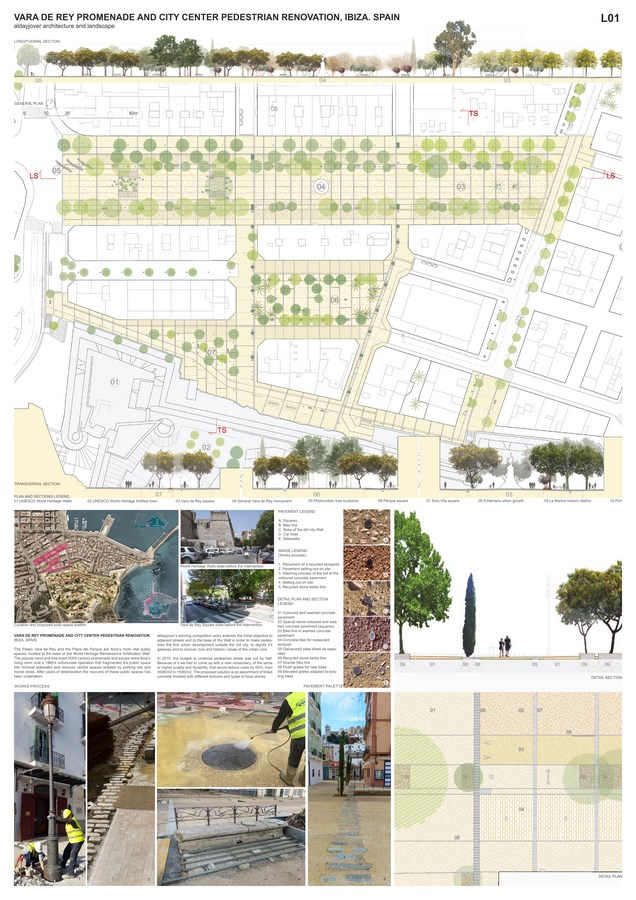
URBAN ARTICULATION
aldayjover’s winning competition entry extends this initial objective to adjacent streets and to the space at the base of the Wall in order to make the first urban development outside the old city (Dalt Vila) pedestrian, to dignify the gateway to the walled city and to recover civic and historic values of Ibiza’s urban core.
These spaces now become key urban articulations connecting pedestrians between two vital points – the port and the walled core. This series of diagonally connected spaces lead to a new elevator that improves access and revitalizes the most inaccessible sector of the old city. Lines of trees and repurposed original stone curbs site guide pedestrian circulation and views.
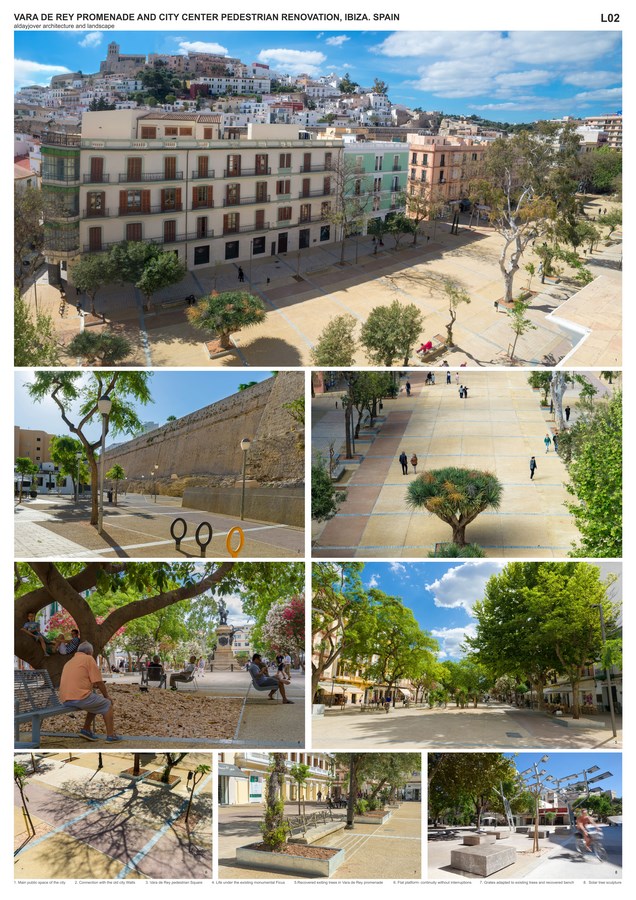
NEW ECONOMICAL PARADIGM
Street curbs, lampposts and urban furniture, like historic stone benches found on site, are recycled. Almost all vegetation is kept, notably monumental species.
Recycling tactics are driven not only by an environmental consciousness, but also by a new economic paradigm. In 2010, the budget to urbanize pedestrian areas was cut by half. The standard stone slabs – transported from the peninsula by boat at major costs, new lampposts and furniture were no longer viable options. We had to come up with a new vocabulary, of the same or higher quality and durability, that would reduce costs by 60%, from 300€/m2 to 154€/m2. Given that infrastructural costs are hardly reducible, the pavement absorbed this massive cost cut.
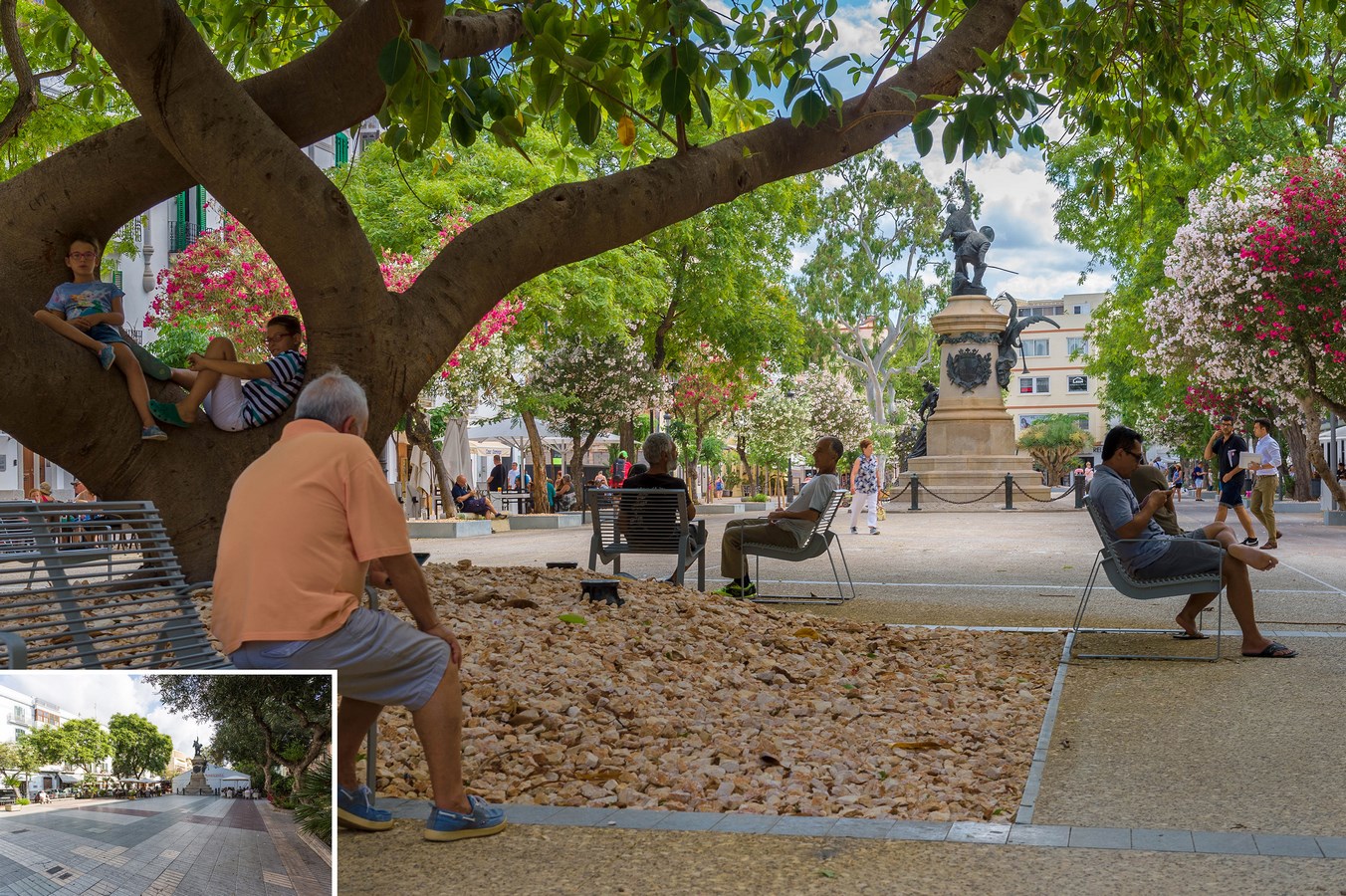
ONE SINGLE MATERIAL: CONCRETE
The proposed solution is an assortment of tinted concrete that is finished with different textures and types of local stones. A single material with different nuances and articulated with fine lines of galvanized steel organizes bicycle and emergency vehicle traffic, heavy pedestrian traffic along façades and spaces for terraces.
The result is a new model for pedestrian areas and for the integration of new developments with the historic architecture of the walled city. It is a new paradigm that demonstrates the recovery public spaces in the new economic era.


